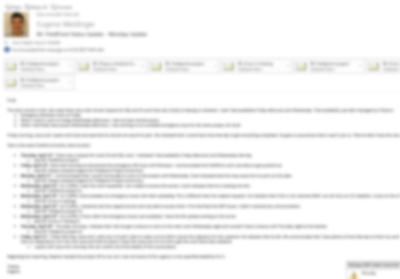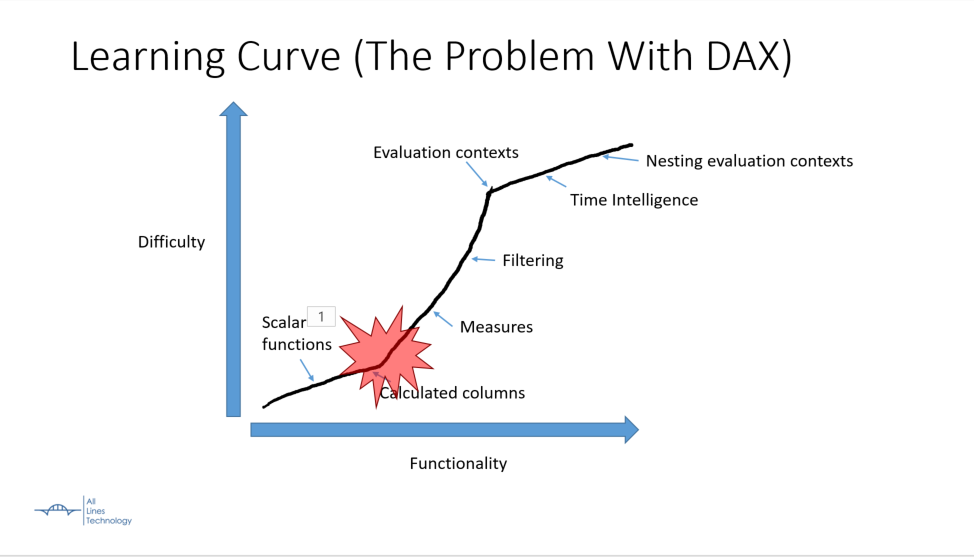If I would write a book on becoming a technical presenter, chapter 0 would be on deciding to actually do it. This is the biggest hurdle for folks, they seem to always come up with reasons why they shouldn’t. This is totally understandable! I was practically shaking when I gave my first presentation, but if I had never taken that first step, I would never be able to making training content for a living.
So in this blog post, I’m going to try to help people get past step 0. Some of the reasons are altruistic and some of them are more selfish, but I think there are plenty of reasons why you should do it.
1. Learners have a unique perspective
I think the biggest issue is folks feeling like they have to be experts, like they have to be perfect. That simply isn’t true. I do think it’s important to preface the beginning of a talk with your experience level, to set expectations. But beyond that, you are golden. Often times in my line of work, I have to learn a new piece of technology in two months and then make a course on it.
To emphasize the previous point a bit more, people who are just learning a technology or are new in a field have a unique perspective that is difficult to find. Good teaching involves an aggressive sense of empathy for your audience, for the learner. And the longer you have been working with a technology, the harder that becomes. Very quickly you forget how hard it is to get a development environment up and running. Very quickly you forget how unintuitive some of the technical terms are.
Learners are going to have a greater sense of empathy with their audience and can warn people about the roadblocks with getting started. This is a rare resource.
2. The community needs new speakers and fresh faces
I know when I was helping run the local Power BI user group, it was a challenge to find speakers. I gave probably a third of our presentations the first year we got started, jsut to try to fill the slots. I think the biggest challenge of running a user group is finding speakers, and user group leaders are always grateful when someone volunteers to speak, regardless of their skill level.
But beyond local groups, the broader community needs new and different speakers. Because of the amount of effort and resources speaking requires, and because of the bias towards “expertise”, you tend to have the same handful of speakers talking about a given subject.
These folks can often be opinionated or set in their ways. It can be value to have other folks who have a fresh perspective, who can help identify different ways of doing things. This is especially true in areas like business intelligence, where it is less about best practices and more about the context of the business you are working in.
3. Sharing content is the best way to learn
Ultimately, to learn well we need something that challenges our assumptions and identifies gaps in what we know. Reading blogs or watching videos usually doesn’t do this because there are two layers of bias going on.
First, it only includes what the author thought was important to include. This often doesn’t include gotchas, edge cases, or things the author assumes everyone knows already. Second, there’s your own bias. When we are doing just-in-time learning, we are often focused on solving a specific problem and will learn just enough to feel comfortable solving that problem. Rarely do we ask “Okay, what am I missing? What could go wrong?”.
But when you try to do something in your homelab, you often find all the setup tasks that weren’t mentioned in the tutorial. You find the things that could (and do) go wrong. When you give a presentation, you think through all the questions someone might ask and so you are forced to learn a subject more deeply.
And as you present multiple times, you run into different questions and develop and intuition for the kinds of things someone might ask you. Giving a presentation with demos is often the best of both worlds, because you have to test it and anticipate whatever questions people might have.
4. Becoming a good speaker takes time and practice
Becoming a good presenter takes time, there’s just no way around it. Even if you are naturally good speaker, there are a set of skills you can only get from practice. One of the biggest one is pacing. When I started speaking, I would either get nervous and speed through my content, or I would get too excited and go over on time.
Being able to stay focused, manage your time, and handle questions or interruptions are all things you have to learn through practice. If you wait until you are an expert speaker to start speaking, this will never happen. Depending on your experience, you might have to present a dozen times to really find your voice and pace.
5. Speaking is good for your career
Presenting is, in my opinion, great for your career. No one should feel obligated to speak as part of their career growth, but it provides a chance to practice a bunch of skills that may not come up normally in your day to day work. In my experience, if you can get comfortable speaking to 70 strangers, it become much easier to talk with 2 of your coworkers. By practicing refining your content, your communication in general become more clear and crisp. But anticipating questions in your presentations, you anticipate things that could go wrong in a project.
It’s also a chance to develop peer relationships that will help you throughout your career. When I go to events these days, the thing I cherish the most is sitting in the speaker’s room and just hearing people chat. I’ve been able to build connections and get my name out there, which has been tremendously helpful for my career. And as a result, when I need help with something, I’ve been able to reach out to those speakers for help and vice versa.
Summary
In summary, speaking can both provide a unique perspective for your audience, and help you grow both as a presenter and as a technical expert. Local user groups and virtual groups are often grateful to have new speakers and can provide a low-risk environment to work on your skills and grow. As time goes on, it can open up opportunities such as consulting that depend on having those communication skills.



